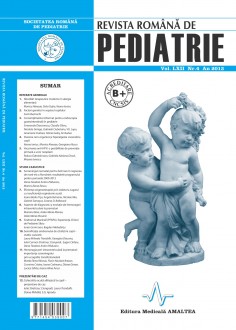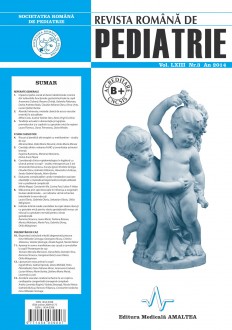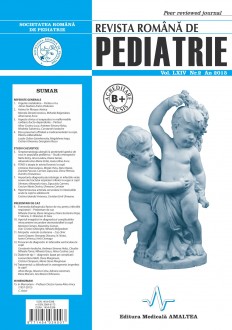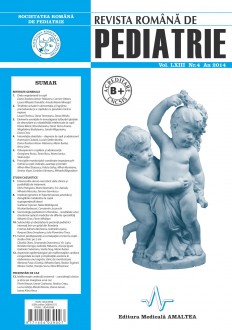SELECT ISSUE
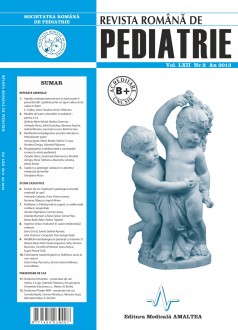
Indexed

| |

|
|
|
| |
|
|
|

|
|
|
|
|
|
|
HIGHLIGHTS
National Awards “Science and Research”
NEW! RJP has announced the annually National Award for "Science and Research" for the best scientific articles published throughout the year in the official journal.
Read the Recommendations for the Conduct, Reporting, Editing, and Publication of Scholarly work in Medical Journals.
The published medical research literature is a global public good. Medical journal editors have a social responsibility to promote global health by publishing, whenever possible, research that furthers health worldwide.
The child with cardiac pathology in the family doctor’s office
ABSTRACT
The congenital or acquired heart disease offers to the child a place in the top of the list with chronic diseases, with the wrights to obtain medical care from a team composed by family doctor, pediatric cardiologist, heart surgeon, nutrition specialist and psychologist. The family doctor has to discover the cardiopathy, to put on a special list the child previously diagnosed, and to ensure the basic care. These depend on the severity of the cardiac disease, the age of the patient, the risks of complications or the vital risk by acquired comorbidities (infections, malnutrition, psychoreactive reactions). The protocol of medical care specific for every cardiac disease established by the pediatric cardiologist must be adapted during the evolution of the disease by a continuous collaboration between the family doctor and the pediatric cardiologist. The problem is more and more complex because the increase of the survival chances of these children thanks to the progresses in diagnosis and medical or surgical treatment.
Key words: heart disease, child, family doctor

